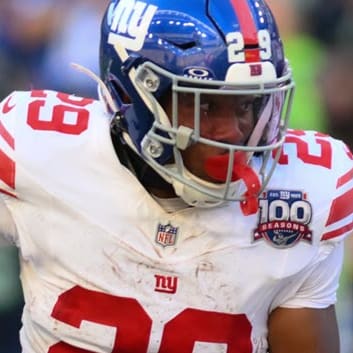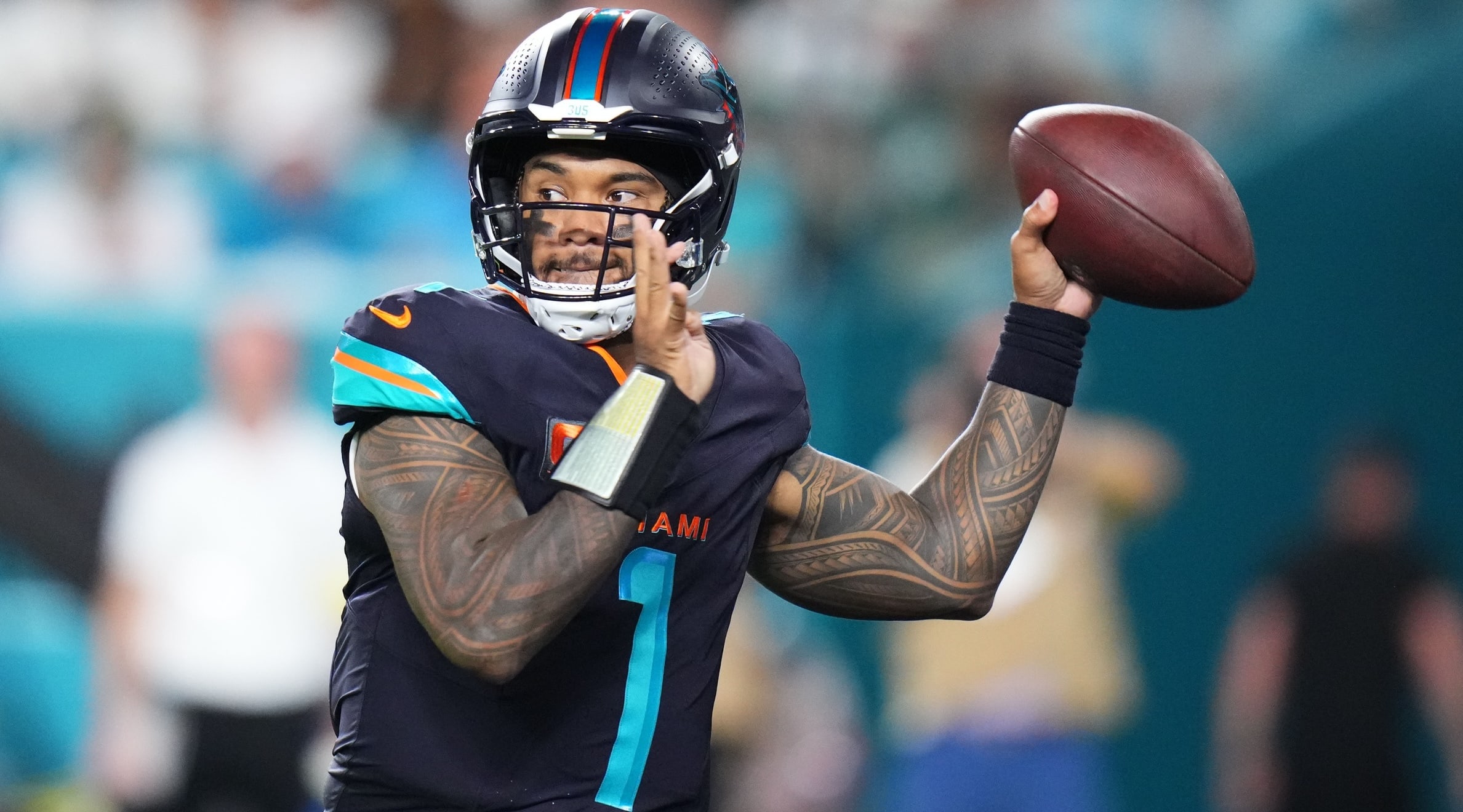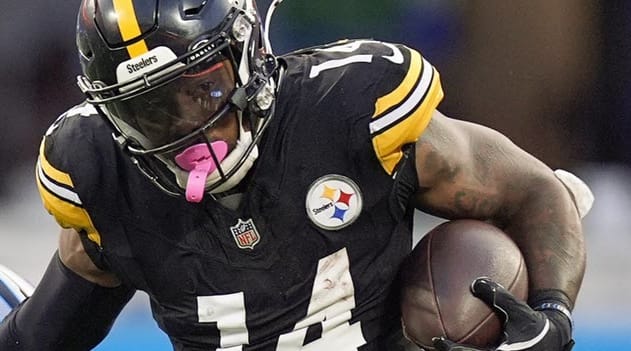The Rams receiver suffered a setback during his rehab for a strained hamstring and his status for Week 1 remains unclear.
Hamstring strains are the most common injuries that will occur in the NFL this season. Multiple players per team will sustain the injury and three out of four players will miss time because of strains to the muscle group. Numerous studies have been carried out to determine risk factors for the problem, including studies aimed at playing surface, draft position, weather and age. Each study seems to uncover some contributing factor as to who is the most likely to suffer the ailment and when and where it will most likely occur. Medical staffs around the league carefully examine the research and attempt to take steps to help mitigate the associated risk.
However, hamstring strains continue to occur and remain an injury with a high recurrence rate. The major hindrance here remains the muscle group's delicate and intricate healing process.
Marked by multiple phases, the healing process of a muscle involves a natural clotting response and an eventual buildup of new tissue. Unfortunately, the remodeled tissue is formed haphazardly and is not as strong as true muscle tissue. The newly formed scar tissue can be deceiving, as an athlete may report an improvement and see a return close to normal function. However, the area is highly susceptible to re-injury as the scar tissue does not possess the same biometric characteristics of healthy muscle tissue. If the scar tissue
The Rams receiver suffered a setback during his rehab for a strained hamstring and his status for Week 1 remains unclear.
Hamstring strains are the most common injuries that will occur in the NFL this season. Multiple players per team will sustain the injury and three out of four players will miss time because of strains to the muscle group. Numerous studies have been carried out to determine risk factors for the problem, including studies aimed at playing surface, draft position, weather and age. Each study seems to uncover some contributing factor as to who is the most likely to suffer the ailment and when and where it will most likely occur. Medical staffs around the league carefully examine the research and attempt to take steps to help mitigate the associated risk.
However, hamstring strains continue to occur and remain an injury with a high recurrence rate. The major hindrance here remains the muscle group's delicate and intricate healing process.
Marked by multiple phases, the healing process of a muscle involves a natural clotting response and an eventual buildup of new tissue. Unfortunately, the remodeled tissue is formed haphazardly and is not as strong as true muscle tissue. The newly formed scar tissue can be deceiving, as an athlete may report an improvement and see a return close to normal function. However, the area is highly susceptible to re-injury as the scar tissue does not possess the same biometric characteristics of healthy muscle tissue. If the scar tissue is disrupted or aggravated, then the entire healing process must begin again.
This information is nothing new, and I repeat it annually to help fantasy managers understand why hamstring strains are the scourge of fantasy football. However, Kupp's case is a bit unique as the receiver opted to visit a specialist for the injury. To me, this suggests he believes there is an underlying factor contributing to the issue.
Multiple back injuries, like disc herniations and stress fractures in the vertebrae, can have associated hamstring pain and tightness. However, there haven't reports of Kupp experiencing any sort of back pain and he doesn't have a history of back issues either. For now, the Rams consider Kupp day-to-day, and coach Sean McVay did add he should have more clarity on the issue by Wednesday. Based on what we know, those invested here would be wise to consider alternatives for Week 1. Van Jefferson would become the lead receiver for Los Angeles if Kupp misses time.
Turf Burns
Mark Andrews: The Ravens remain tight-lipped regarding specifics on the injury that has kept Andrews off the field for more than a week. Coach John Harbaugh hinted Andrews could return to the practice field on Wednesday and that he wasn't ready to "hit the panic button." If Andrews is unable to practice by midweek, it seems likely he does not play against the Texans. On the plus side, the impending injury report should provide some hint as to what exactly is ailing the tight end and help determine if this is a long-term issue.
Joe Burrow: The Bengals should have Burrow under center on Sunday, as the quarterback has been upgraded to day-to-day. Burrow missed most of training camp and preseason after straining his calf. The delicate balance needed in healing previously discussed with Kupp's hamstring injury applies here, too. While Burrow remains on track to start against the Browns, he will have carry an elevated degree of risk for the next few weeks.
Breece Hall: The Jets running back is expected to play against the Bills on Monday night. Hall suffered a torn anterior cruciate ligament (ACL) during Week 7 of his rookie season and has progressively worked his way back. Anyone that drafted Hall likely did so playing the long game and shouldn't expect big productivity in the early portions of the season. New York will likely ease him back into things and lean heavily on Dalvin Cook to offset Hall's workload. It's great he's back in uniform but keep in mind a return to performance is different than a return to play.
Jerry Jeudy: Like Kupp, Jeudy's status following a hamstring strain remains unclear. He was seen participating in prepractice stretching before doing conditioning work on the side of the field on Monday. Though he has yet to be officially ruled out, a Week 1 absence still seems likely. Even if Jeudy managed to play, his fantasy value could be limited, as the team carefully monitors his snap count. He's making positive steps and a brief absence to start the year could prevent him from yo-yoing in-and-out of the lineup for the remainder of the season.
Jaxon Smith-Njigba: The rookie wideout was an active participant in practice Monday but did so with his surgically repaired wrist heavily wrapped. Still, he managed to make catches during drills and has an outside shot of playing against the Rams. Smith-Njigba remains behind DK Metcalf and Tyler Lockett on the depth chart, and any limitation would further hinder his value. I'm keeping him on the bench this week until I'm 100 percent sure he's put this injury behind him.
Kadarius Toney: Coach Andy Reid said Sunday that Toney would be "good to go" for Thursday's season opener versus Detroit. Toney underwent a knee debridement in late July to address a lingering meniscus problem in his knee. The troublesome tissue was removed, and Toney spent camp and preseason rehabbing the joint. He was a limited participant in practice Monday, though that seems to be by design. Given his extensive injury history, it is not surprising to see Kansas City handle his workload conservatively. Toney remains a high-risk, high-reward option at receiver.
Jaylen Waddle: The positive news on receivers continues in Miami where the Dolphins expect Waddle to play Week 1 against the Chargers. Waddle suffered an undisclosed abdominal injury August 9 in a joint practice with Atlanta. Fortunately, he has been a fixture in practice since late last week and should be used in all formats.



































